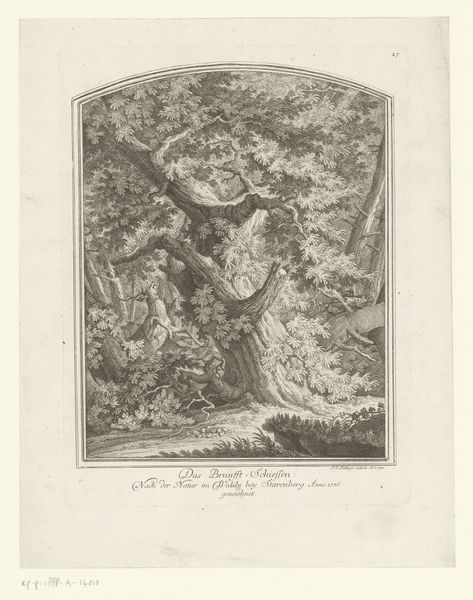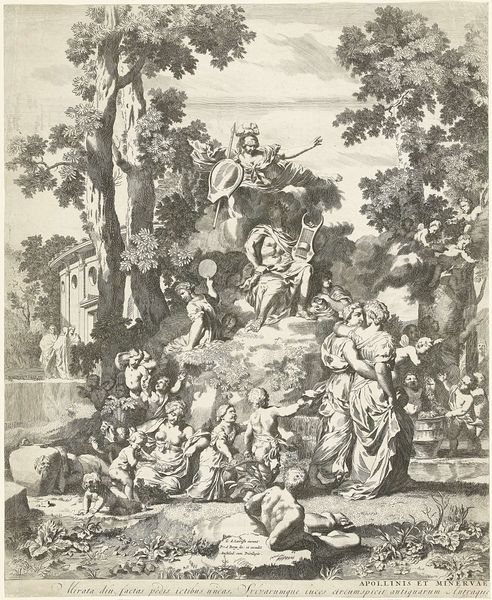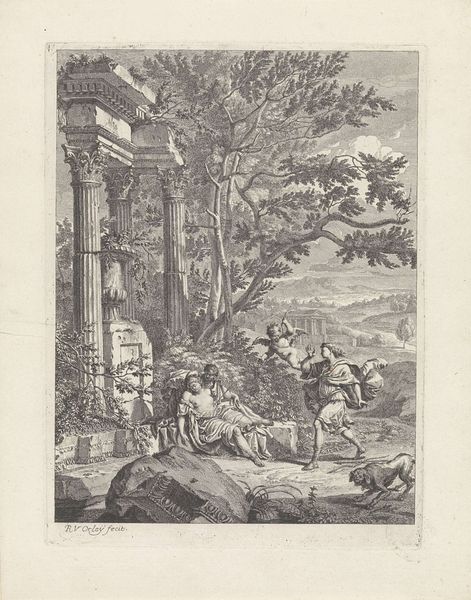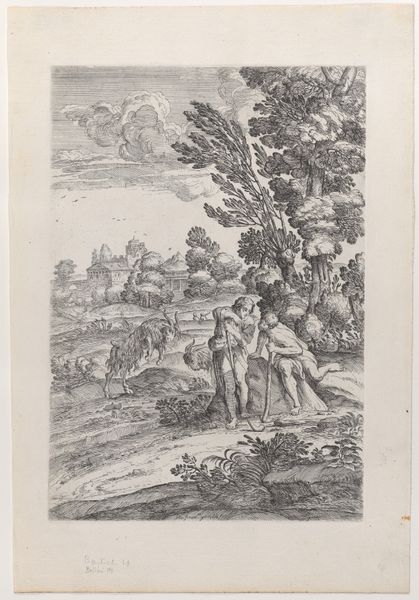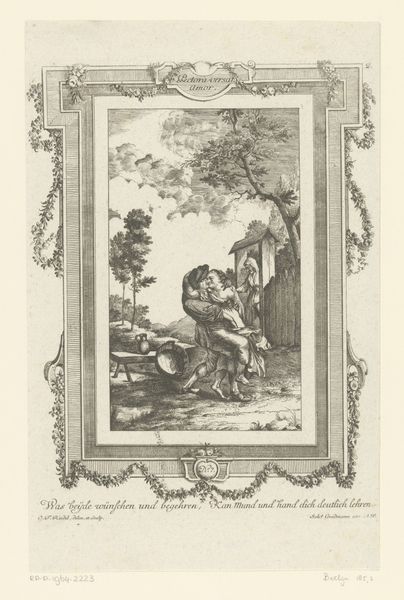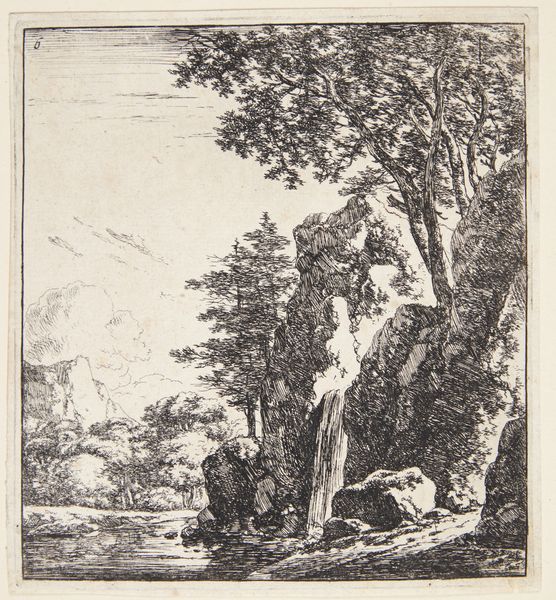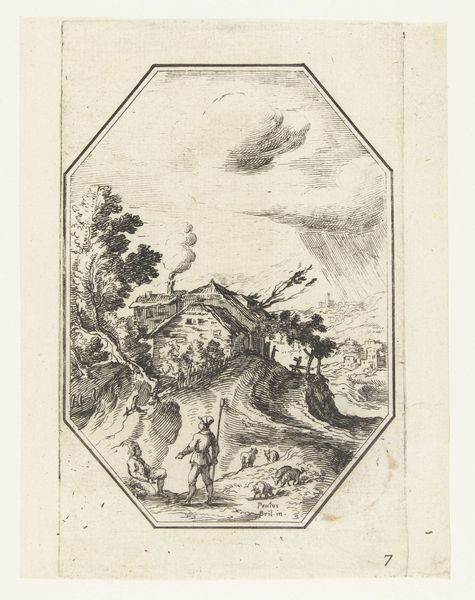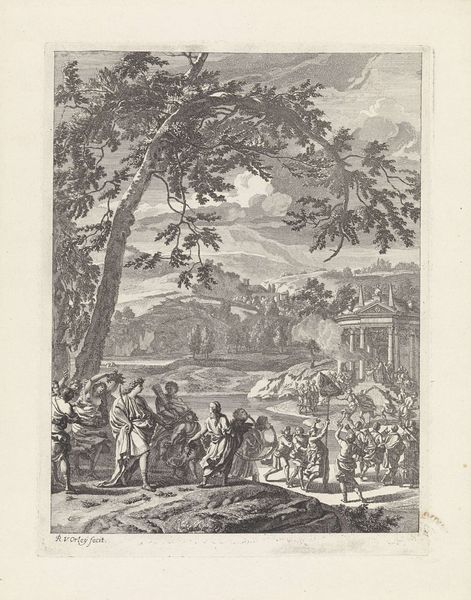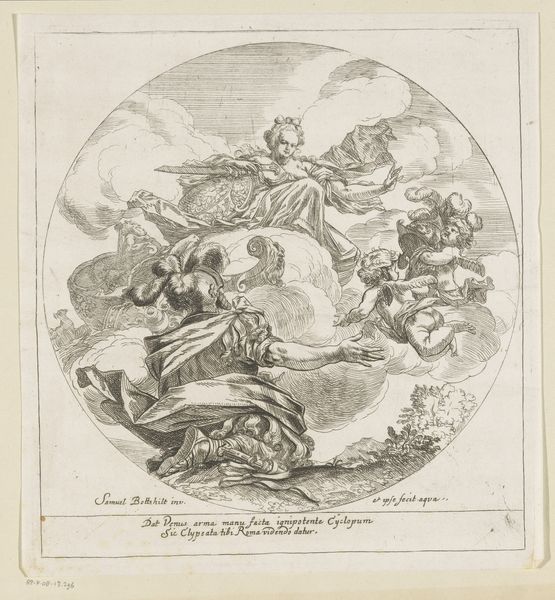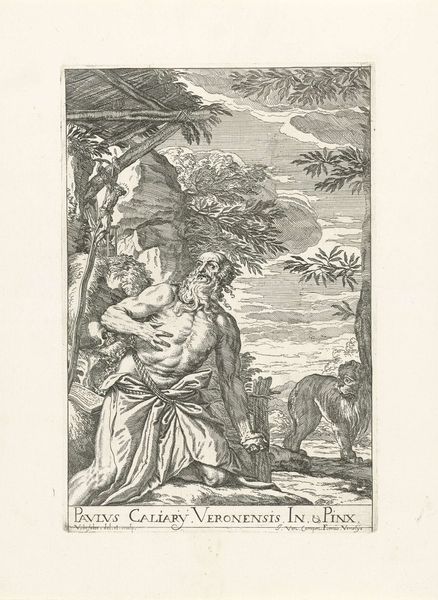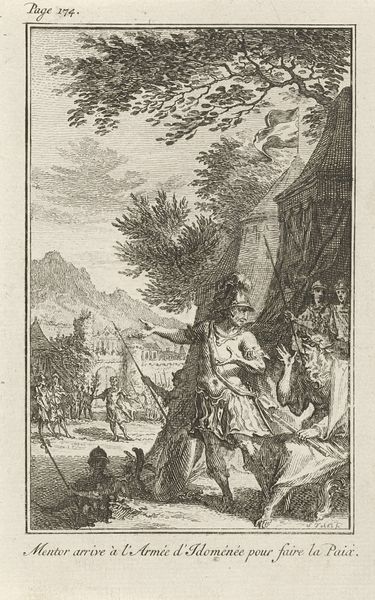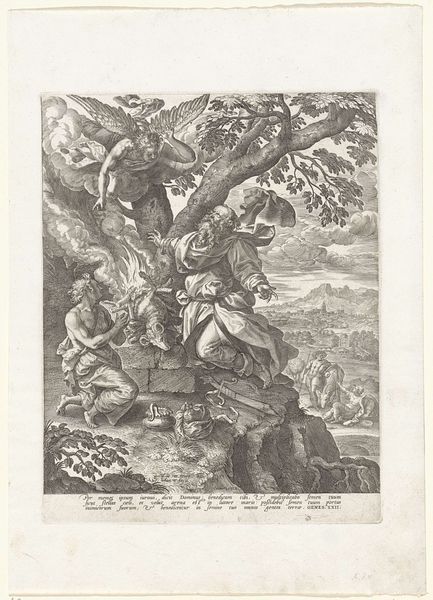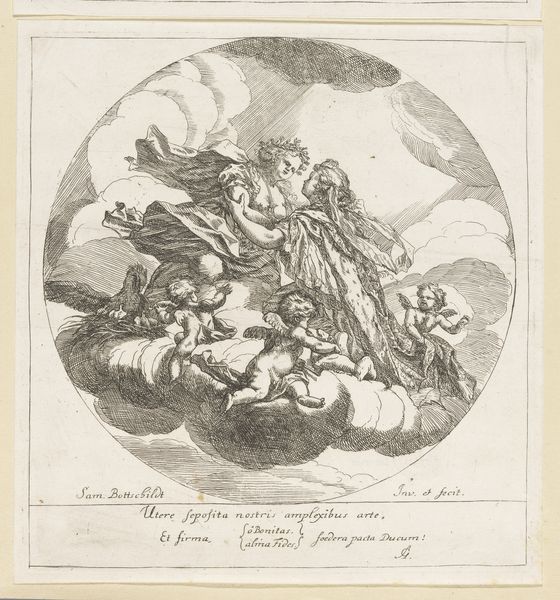
Dimensions: height 234 mm, width 192 mm
Copyright: Rijks Museum: Open Domain
Editor: This etching, "The rebellious angels of the Netherlands," was created between 1787 and 1790. The figures are so active, full of swirling motion and struggle. What do you see in this piece, beyond the obvious conflict? Curator: I see a deliberate use of familiar symbols to shape the viewer’s emotional response. Consider the title itself—"rebellious angels." The angel, traditionally a symbol of divine will, here embodies dissent. Does this suggest righteous defiance or blasphemy? Editor: It's confusing! The upward struggle feels…almost heroic? Curator: Precisely. The artist taps into the inherent ambiguity of symbols. Notice the central column—almost a Jacob's Ladder in reverse—cluttered with grasping figures. A familiar story of aspiration and divine connection, but reinterpreted. What feeling does that eagle evoke at the top? Editor: Ominous, maybe? Like it's about to descend upon them? Curator: Yes, but is it a symbol of oppressive power, or perhaps divine retribution? Remember, context is everything. At this time, "Netherlands" was often shorthand for revolt against established order. The etching becomes a meditation on the very *nature* of rebellion, its causes, consequences, and potential for either triumph or downfall. Does that reading resonate with you? Editor: Absolutely. Seeing it that way, the artist really captures the uncertainty of revolutionary times. Curator: Indeed. Symbols are never fixed; their power lies in their mutability and their resonance across time and cultures. Editor: That's fascinating. I never thought of symbols having such…fluidity.
Comments
No comments
Be the first to comment and join the conversation on the ultimate creative platform.
